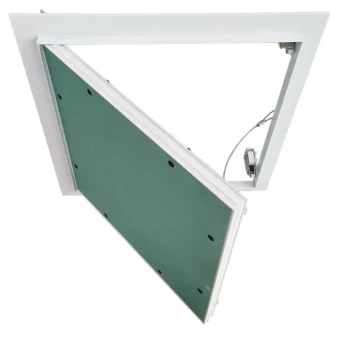Nov . 11, 2024 03:04 Back to list
Suspended Ceiling Grids and Tiles for Elegant Interior Design Solutions
Understanding Suspended Ceiling Grids and Tiles A Comprehensive Overview
Suspended ceiling grids and tiles have become integral components in modern architecture and interior design. Often referred to as drop ceilings, these systems provide a versatile solution for various commercial and residential spaces. They not only enhance the aesthetic appeal of a room but also serve practical purposes such as sound reduction and thermal insulation. This article delves into the components, advantages, installation process, and considerations related to suspended ceiling grids and tiles.
Components of Suspended Ceiling Systems
A suspended ceiling system generally consists of two main components the grid and the tiles. The grid, often made from lightweight metal, is constructed of main beams and cross tees that create a framework to support the ceiling tiles. These grids can be customized to fit different dimensions of the room and are typically suspended from the structural ceiling with wires.
The ceiling tiles, which sit within the grid framework, come in various materials including mineral fiber, PVC, and metal. They are available in a multitude of designs and finishes, allowing for endless customization options. The choice of tile material greatly influences not only the aesthetics but also the acoustic properties and durability of the ceiling.
Advantages of Suspended Ceiling Grids and Tiles
1. Aesthetic Flexibility Suspended ceilings offer endless design possibilities. With various textures, colors, and patterns available, they can complement any interior design style, from modern to traditional.
2. Acoustic Control One of the standout features of suspended ceilings is their ability to control sound. Acoustic tiles can significantly reduce noise levels, making them ideal for offices, conference rooms, and educational facilities.
3. Accessibility Suspended ceilings provide easy access to plumbing, electrical systems, and HVAC ducts. Maintenance and repairs become straightforward as tiles can be easily removed and replaced.
4. Thermal Insulation Many ceiling tiles offer additional insulation, improving energy efficiency by helping to regulate indoor temperatures. This can lead to reduced heating and cooling costs.
5. Hiding Imperfections A suspended ceiling can effectively hide any imperfections in the structural ceiling, such as cracks, wiring, or pipes.
suspended ceiling grid and tiles

Installation Process
The installation of suspended ceiling grids and tiles requires careful planning and execution. Initially, accurate measurements of the room dimensions must be taken to create a layout plan. The main beams are first installed, followed by cross tees, ensuring that the grid is level and uniformly spaced.
Once the grid framework is securely in place, the ceiling tiles are cut to size if necessary and placed into the grid. It is crucial during installation to consider the weight of the tiles, as different materials may require additional support. Finally, any necessary lighting fixtures can be integrated into the ceiling design, providing both functionality and style.
Considerations Before Installation
Before opting for a suspended ceiling grid and tiles, there are some essential considerations
- Building Codes Ensure compliance with local building codes and regulations, particularly concerning fire safety and acoustic requirements. - Tiles’ Material and Quality Select high-quality tiles that meet your aesthetic and functional needs. Look for tiles with good acoustic properties and durability to avoid frequent replacements.
- Budget Consider the overall budget for the project. While suspended ceilings can be cost-effective, the choice of materials may significantly impact the overall cost.
- Professional Installation Weigh the advantages of professional installation versus DIY. While homeowners may choose to install them, hiring professionals can guarantee a more precise and efficient process.
Conclusion
Suspended ceiling grids and tiles offer a perfect blend of functionality and style for various spaces. Their ability to enhance the acoustic and thermal properties of a room, along with their aesthetic versatility, make them a popular choice in both commercial and residential environments. By understanding their components, advantages, and installation considerations, individuals can make informed decisions when incorporating suspended ceilings into their design projects.
-
Durable Ceiling T Grid Systems | Easy InstallationNewsAug.29,2025
-
PVC Gypsum Ceiling: Durable, Laminated Tiles for Modern SpacesNewsAug.28,2025
-
Pvc Gypsum Ceiling Is DurableNewsAug.21,2025
-
Mineral Fiber Board Is DurableNewsAug.21,2025
-
Ceiling Tile Clip Reusable DesignNewsAug.21,2025
-
Ceiling T Grid Modular DesignNewsAug.21,2025







